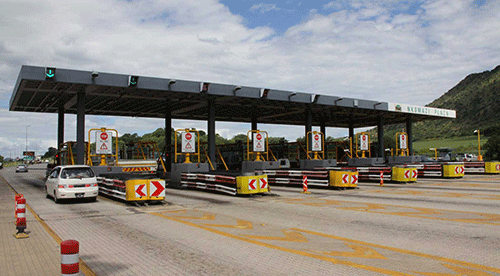The Road Fund Administration (RFA) projects it will require about N$4.3 billion per annum to rehabilitate Namibian roads. The administration currently collects only about N$2.5 billion per annum from road users, which translates into a shortfall of N$1.8 billion.
As a revenue alternative, RFA CEO Ali Ipinge this week again reiterated the stance that road tolls are one solution to collect taxes to fund road infrastructure.
“This is the route to go if we are to have a sustainable and economically efficient road sector in Namibia going forward. If we do nothing now, we are likely to see a further deterioration in the quality of road infrastructure, which means overall transportation costs will go up and is going to cost the economy much more money,” Ipinge warned.
The RFA CEO shared this warning this week during a government information session, noting the administration’s funding gap has been growing over the years and revenue needs to be sourced from somewhere.
“We are not able to fund the maintenance and rehabilitation programmes at optimum levels,” said Ipinge.
The RFA currently receives its revenue through the Road User Charging System (RUCS), which was developed with the aim of economically recovering the full cost of road expenditure from road users in an equitable manner.
“The system determines the amount and manner of funds to be raised from road users following the user-pay principle and consequently determines the road user charges to be imposed,” Ipinge explained.
The RUCS was designed to ensure revenue needed to provide and maintain roads is raised from road users (including foreign road users) rather than the general taxpayer.
The RUCS was also designed to price the use of roads to improve economic efficiency in road transport by removing price distortions and charging road users according to the utilisation of roads.
The CEO further noted they have been adjusting road charge systems in line with inflation, but this alone is not sufficient. In addition, Ipinge noted that increasing tariffs depend on affordability by road users.
“If we fail to close the gap, as road users going forward, there will be potholes on roads and the transportation costs that are associated with bad roads will increase. We need to find that balance of not overburdening road users with additional tariffs,” Ipinge explained.
Currently, the RFA has five revenue systems comprised of fuel levies (60% of total income payable at the pump by road users); vehicle registration and annual licensing fees (up to 35% of income); cross-border charges; mass distance charges; and abnormal load fees.
Looking into the future, Ipinge said there are numerous challenges but said for road users, an emerging opportunity is the advent of fuel-efficient cars and electric vehicles. This transport optimisation means the RFA will be generating less revenue in the future from fuel levies, thereby further reducing the ability to maintain national roads.


